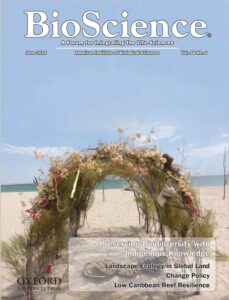Comcaac
When I saw the vast expanse of Isla Tiburón from the shores of Punta Chueca for the first time, the homeland of the Comaac (Seri People) settled in my heart and mind, never to leave.
Photo credit: Duke University, Community-Based Marine Conservation in the Gulf of California
Since the first day I had the fortune to visit the homeland of the Comcaac 2005, I have had the privilege to learn from and explore with many dear Comcaac friends and teachers, first and foremost Humberto Romero Morales.
Questions of what plants occur on the island and how they differ from the mainland, were the jumping off point. Those questions led me on a life-long journey to better know this desert-sea realm and its people.
Among many projects and trips, which are ongoing, these efforts represent several of the main collaborative projects over the years:
• Plant Life of a Desert Archipelago
This book is the first in-depth coverage of the plants on islands in the Gulf of California found in between the coasts of Baja California and Sonora. The work is the culmination of decades of study by botanist Richard Felger, a lifetime of knowledge of Humberto Romero-Morales, and recent investigations by Benjamin Wilder. Their collective effort weaves together careful and accurate botanical science with the rich cultural and stunning physical setting of this island realm.

• Conservation Ecology Courses to Create Local Leaders Among the Comcaac
In order to increase opportunities for knowledge transmission and to support the development of the next generation of leaders in conservation and ecology among the Comcaac, this project created an intensive three- parted field-based ecology course. In November 2015, March 2016, and April 2016, 16 students participated in and completed the three blocks of the course over a combined 50 days. Students received
- in-depth classroom training by a series of esteemed visiting researchers,
- conducted multiple field ecology projects,
- maintained a detailed field notebook,
- developed, wrote, and presented proposals for independent ecology and conservation projects formally submitted to the Mexican Commission for Natural Protected Areas (CONANP),
- took two final exams,
- and participated in shared learning with Duke University students.
A desert garden for research, conservation, education, and culture
by Humberto Romero Morales
Jardín Botánico Xaaslca Án is a homebase for Humberto and collaborators to continue their education of Comcaac youth, a site for short- or long-term research on desert plants, and a first of its kind interpretive site for people to better understand the connection between people and plants from the perspective of the Comcaac.
• The importance of indigenous knowledge in curbing the loss of language and biodiversity
Indigenous and local traditional knowledge of place-based biodiversity is perhaps the oldest scientific tradition on earth. We illustrate how an all taxa biodiversity inventory network of projects in collaboration with the Comcaac in northwestern Mexico is advancing not only biosystematics but also species recovery, habitat restoration, language conservation and maintenance, and the maintenance of traditional livelihoods. It is essential to not merely seek out one-to-one correspondences between Western and Indigenous knowledge but also to recognize and respect the creative tensions among these different knowledge systems, because this is where the most profound insights and fruitful collaborations emerge.

- Supplemental Material 1a_Plants in the territory of the Comcaac
- Supplemental Material 1b_Mollusks in the territory of the Comcaac
- Supplemental Material 1d_Terrestrial Reptiles in the territory of the Comcaac
- Supplemental Material 1e_Birds in the territory of the Comcaac
- Supplemental Material 1f_Marine Mammals in the territory of the Comcaac
- Supplemental Material 1g_Terrestrial Mammals in the territory of the Comcaac
- Supplemental material 2_Scientific Publications coauthored with the Comcaac




















